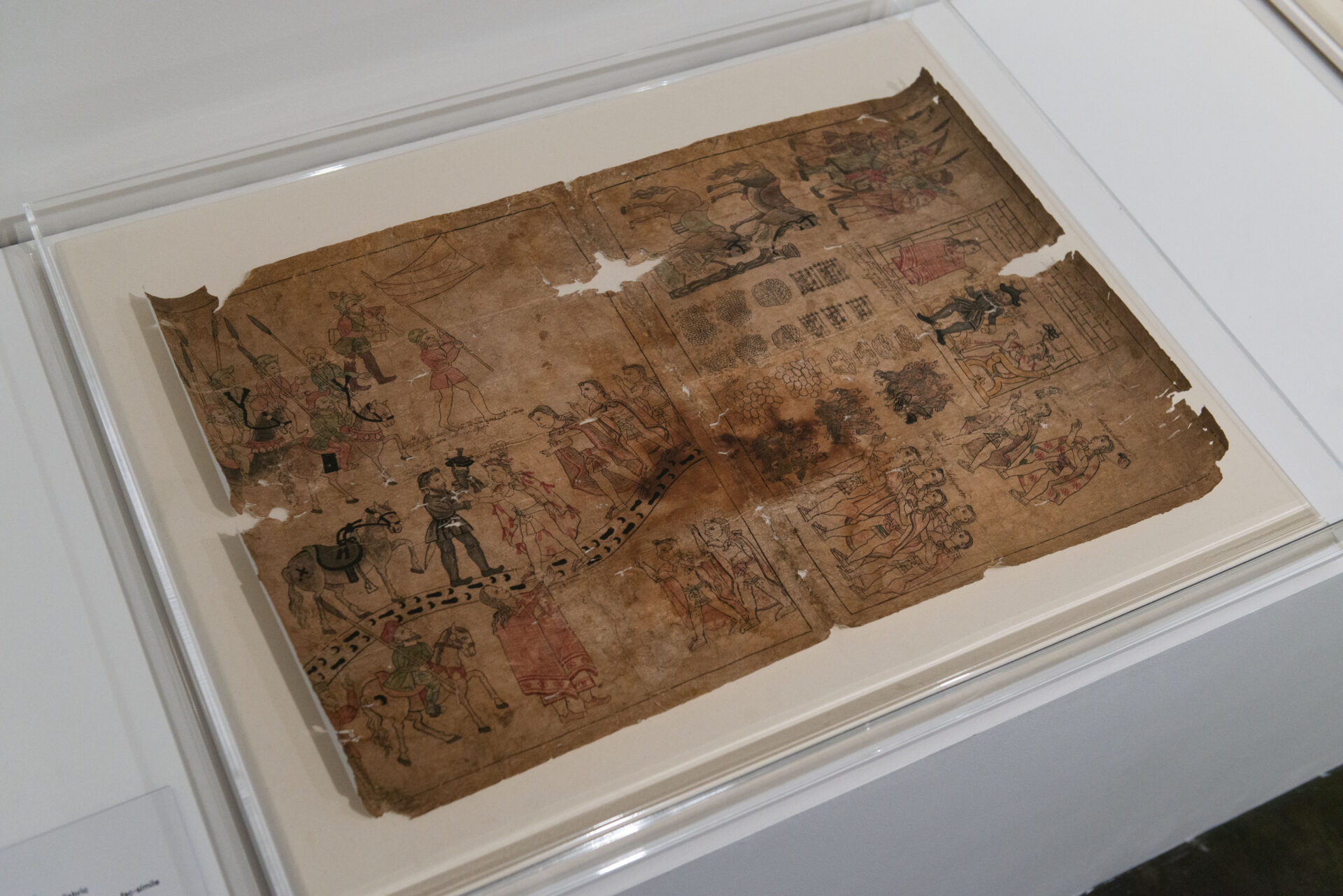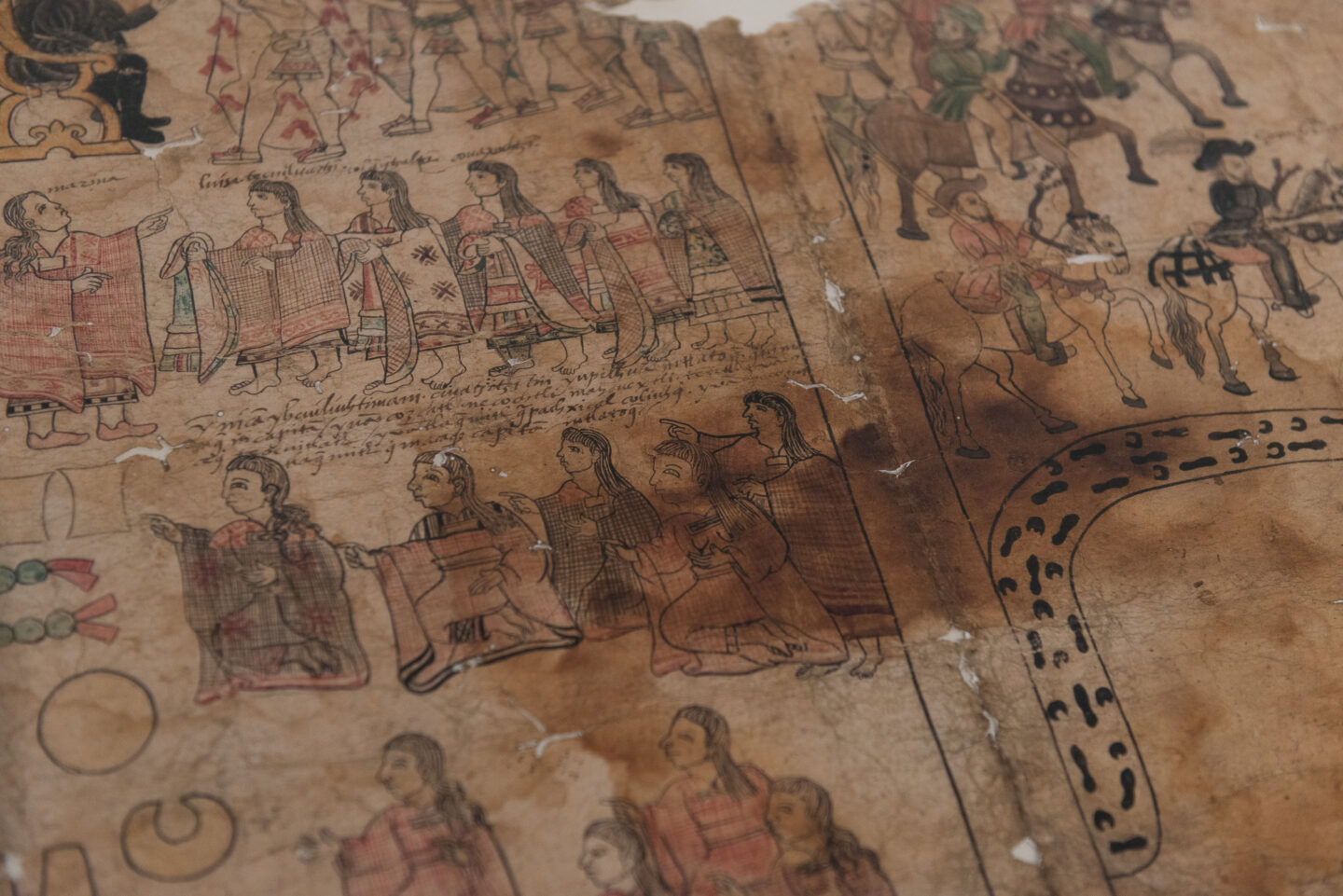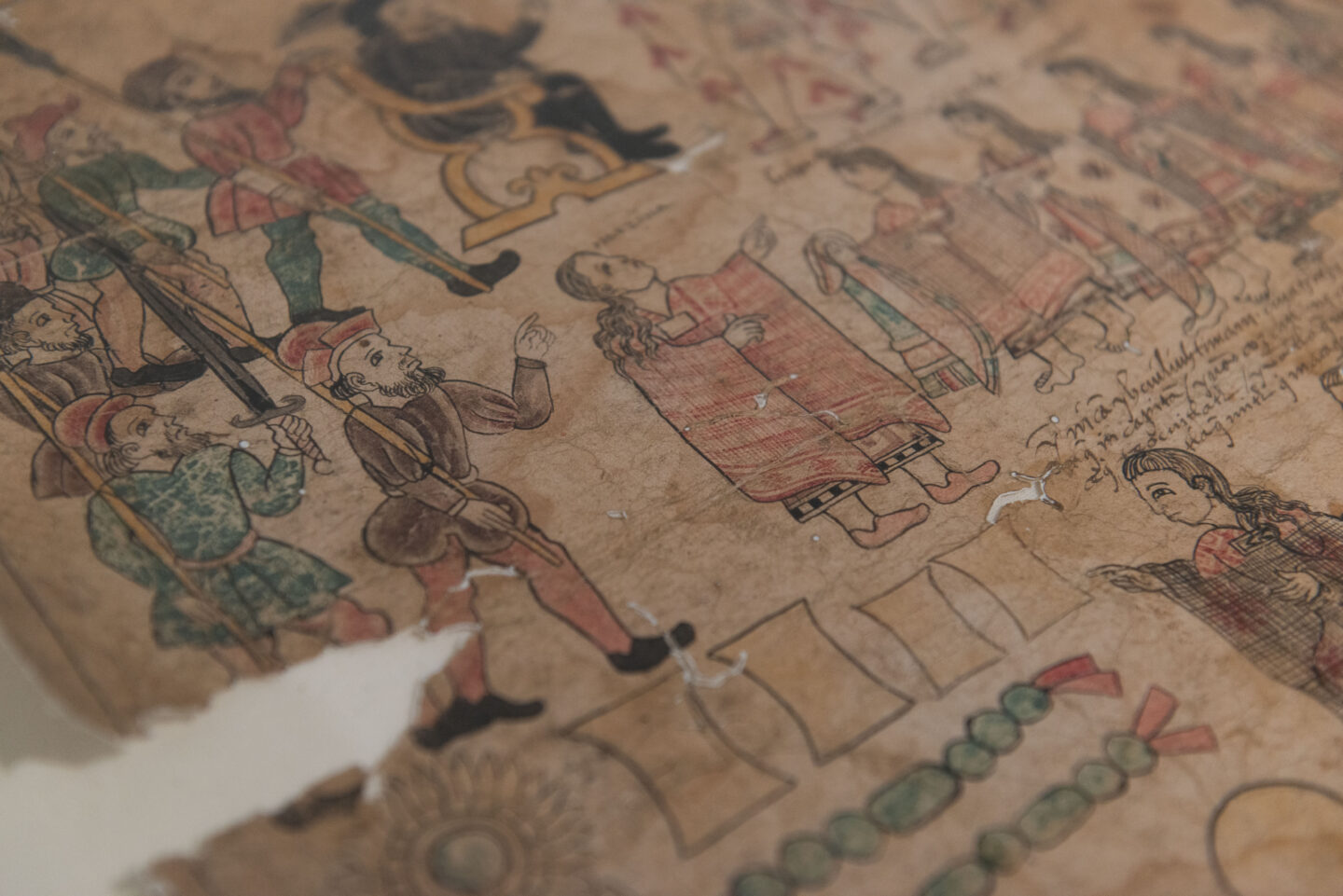
Malinche
Between the years 1500 and 1529, lived Malinche, a Nahua who was probably born on what we now call the coast of the Gulf of Mexico. Malinche is maybe the distorted form of Malintzin picked up by the Spanish ear, which is just another of the many names attributed to her, whose birth name is unknown.
In official historical records, Malinche is known for supposedly having acted as translator and advisor to Hernán Cortés in the invasion and destruction of the Aztec Empire (1519–1521).
In Lienzo de Tlaxcala¹ we come across the recreation of a historical moment whose poetic violence we can only envision: the brutal encounter between Tlaxcallans and Castillians. before this mysterious image, we are summoned to witness the unnameable: the deafening noise of muskets, children crying before the corpse of their bloodied parents, huts set on fire, young women being raped by Spaniards, looting, destruction, Spanish soldiers murdered without even knowing where the arrow came from. but we can also ask ourselves: what stories do these strange spots hold? or what unpredictable events announce these slits?
Malintzin was known for being a collaborator of the Iberian invasion. however, we can ask ourselves: was she merely trying to survive the extermination that was coming? instead, was her silent work an internal attack, by means of sabotage and contagion? in “any case, her remarkable linguistic abilities can serve us as a way to go beyond History, eroding its language. could “it be that in Lienzo de Tlaxcala some clue is encrypted? perhaps there are elements contained therein for us to imagine another type of prophetic re-reading of the past. thus, this map does not indicate the coordinates for a geographical country, but for places long forgotten and yet to be imagined.
abigail campos leal
translated from Portuguese by mariana nacif mendes
1. The Lienzo de Tlaxcala is a colonial codice painted around 1550. It tells the history of the conquest of Mexico from the perspective of the Tlaxcallans, a long-time enemy of the Aztec. Available at: nmdigital.unm.edu/digital/collection/achl/id/1609/. Accessed July 2023.
- Detalhe da obra Lienzo de Tlaxcala[Tecido de Tlaxcala], de Malinche durante a 35ª Bienal de São Paulo – coreografias do impossível © Levi Fanan / Fundação Bienal de São Paulo
- Detalhe da obra Lienzo de Tlaxcala[Tecido de Tlaxcala], de Malinche durante a 35ª Bienal de São Paulo – coreografias do impossível © Levi Fanan / Fundação Bienal de São Paulo
- Detalhe da obra Lienzo de Tlaxcala[Tecido de Tlaxcala], de Malinche durante a 35ª Bienal de São Paulo – coreografias do impossível © Levi Fanan / Fundação Bienal de São Paulo
- Detalhe da obra Lienzo de Tlaxcala[Tecido de Tlaxcala], de Malinche durante a 35ª Bienal de São Paulo – coreografias do impossível © Levi Fanan / Fundação Bienal de São Paulo
Malinche was born in the Gulf Coast region of Mexico in the early 16th century. She was captured during a war as a child and sold into slavery to a family in the community of Xicalongo, where she learned the Nahuatl language of the Aztecs and the Mayan language. Later, she was given to the Spanish conquistador Hernán Cortés, becoming his wife and interpreter during the invasion of Mexican territories.

 Português
Português


